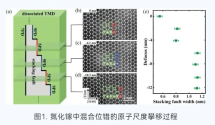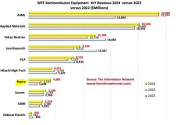Peking University Yang Xuelin and Shen Bo's team made important progress in the study of atomic-level dislocation climbing dynamics in GaN epitaxial materials
The team led by Yang Xuelin and Shen Bo from the Institute of Condensed Matter Physics and Materials Physics, School of Physics, Peking University, the Center for Wide Bandgap Semiconductors, the State Key Laboratory of Artificial Microstructures and Mesoscopic Physics, and the Center for Nano-Optoelectronics Frontier Sciences have made important progress in the study of the atomic-scale climbing dynamics of dislocations in GaN epitaxial films . The relevant results were published online in Physical Review Letters on February 5, 2025 under the title " Atomistic Understanding of Dislocation Climb in Nitride Semiconductors: Role of Asymmetric Jogs".


